This will likely be one of the most chaotic Black Fridays you’ve ever seen, and you know why?
Your customers’ screens are already overflowing with flash deals that move the needle, mouthwatering product discounts, and extravagant coupon offers from other brands. Everyone, including you, is trying to make a seasonal fortune during the shopping frenzy.
But doing the same thing as others will yield little to no results. It would be best to have an out-of-the-box idea to effectively cut through the noise and directly launch your products to the forestage.
In this article, we’ll share ten proven Black Friday marketing strategies to do just that, including some innovative Black Friday marketing ideas.
Understanding Black Friday Marketing
Black Friday marketing refers to the strategies and tactics employed by businesses to promote their products and services during the Black Friday shopping event. This period is critical for retailers as it marks the beginning of the holiday shopping season, a time when consumers are eager to spend and find the best deals.
Effective Black Friday marketing strategies can significantly impact a retailer’s annual sales, making it essential to stand out in the crowded marketplace. By leveraging unique promotions, targeted advertising, and engaging content, businesses can attract both new and loyal customers, driving substantial revenue during this high-stakes shopping event.
What is Black Friday for eCommerce?
Black Friday is a pivotal event for eCommerce businesses, offering a unique opportunity to increase online sales, drive website traffic, and boost customer engagement. During this period, online retailers roll out substantial discounts, promotions, and special deals on their websites, making it an ideal time for customers to shop online.
The convenience of online shopping, combined with the allure of exclusive Black Friday deals, encourages consumers to make purchases from the comfort of their homes. For eCommerce businesses, this means a chance to capture a larger share of the market, enhance brand visibility, and build lasting customer relationships through exceptional online shopping experiences.
Black Friday Marketing Stats and Trends
- Online Sales Projections: Black Friday online sales are expected to reach $10.8 billion in 2024, with total holiday season online spending projected to hit $296 billion. This underscores the immense potential for eCommerce businesses to capitalize on the shopping frenzy.
- Mobile Shopping: In 2023, 54% of online Black Friday orders were made via mobile devices, highlighting the growing importance of mobile optimization. Ensuring a seamless mobile shopping experience can significantly boost sales.
- SMS Marketing: SMS marketing on Black Friday boasts a 98% open rate, leading to higher engagement and conversions compared to email. This makes SMS a powerful tool for reaching customers with timely and relevant offers.
- Social Media Influence: Social media channels like Instagram and TikTok drive five times more Cyber Week traffic than email, with many shoppers discovering deals through these platforms. Leveraging social media can amplify your reach and attract a broader audience.
Preparing for Black Friday
To make the most of the Black Friday shopping event, businesses must prepare their marketing strategies and tactics well in advance. This preparation involves understanding customer behavior, setting clear objectives, and ensuring all marketing channels are aligned for a cohesive campaign.
By planning ahead, businesses can create compelling Black Friday deals, optimize their online presence, and ensure they are ready to handle the increased traffic and demand. Effective preparation not only maximizes sales during Black Friday but also sets the stage for a successful holiday shopping season.
Prepare Your Marketing Lists and Segments
Preparing your marketing lists and segments is crucial for a successful Black Friday campaign. This involves:
- Reviewing and Updating Email Lists: Ensure your email lists are accurate and relevant. Remove inactive subscribers and update contact information to improve deliverability and engagement.
- Segmenting Your Audience: Divide your audience based on purchase history, browsing behavior, or demographics. This allows you to create targeted marketing campaigns that resonate with specific segments.
- Creating Personalized Messages: Craft personalized messages that showcase Black Friday deals aligned with each segment’s interests. Personalized content is more likely to capture attention and drive conversions.
- Setting Up Marketing Automation: Use marketing automation tools to send targeted promotions at the right time. Automated campaigns can increase engagement and conversions by delivering timely and relevant offers.
By preparing your marketing lists and segments, you can create a targeted and effective Black Friday marketing campaign that drives sales, boosts customer engagement, and sets your business up for success during the holiday shopping season.
1. Launch Early Teasers
Max Tang, CMO at GEEKOM, says, “Teasers are just like movie trailers. They keep the audience on their toes with a glimpse of what’s to come. And this, in turn, helps to build anticipation, whereas anticipation builds excitement.”
Take Elon Musk’s Tesla as an example. The auto-motor brand teased a Robocab in 2019 and garnered much frenzied expectations from fans and competitors years ahead of the unveiling in 2024. While you don’t have the luxury of years for Black Friday, you can still set the stage with the ample time you have.
Besides the excitement, a heads-up puts your customers in ready mode. They stack up cash weeks ahead and activate their commitment bias, which makes them more likely to follow through on a purchase since they’ve mentally prepared.
Moreover, such an approach creates a curiosity gap. You only show enough to stir your audience’s appetite and pique interest while withholding the real deal.
A strong Black Friday marketing strategy includes creating successful teasers. To do this, follow these steps:
- Define your objectives and segment audience – The prime objective of every teaser is to generate enough buzz before the sales week, but it could also be to collect lead data like emails, phone numbers, or social media details. Once you have an objective, define your audience, such as VIP customers, email subscribers, and social followers. This allows for segmentation and assists in creating highly personalized teasers.
- Craft teaser content and distribute – Based on your segmentation, develop creative and intriguing content like sneak peek videos, product reveals, and mystery discounts. You should keep the messaging subtle but enticing enough to spark interest without revealing too much. To distribute the content, utilize different channels, including social media, emails, SMS, and your website.
- Track engagement and optimize – Monitor how your audience responds by analyzing metrics such as email open rates and engagements, clickthroughs, number of leads collected, social shares and comments, likes, and so on. Insights from your analysis are vital for optimizing the teasers’ performances.
Is there an appropriate time to launch teasers?
Well, not exactly, according to Rodger Desai, CEO of Prove. “But ideally, it should be about two to three weeks before the main event. Launching too early could lead to the excitement fizzling out. On the flip side, launching too late means missing the chance to build momentum and give customers time to plan”, he adds.
2. Run Targeted and Retargeted Social Media Ads
Over 5 billion people worldwide use social media, and a significant fraction make online purchases. You can easily generate more sales by promoting your deals to this broad audience, especially targeting new customers.
According to Tidio, 48% of online shoppers search for deals on social media. Moreover, social media marketing strategies contribute to 5% of global Black Friday sales. While that might not seem much, it could still translate into tens of thousands of dollars or even millions. Plus, the reach and engagement or leads you get are way more valuable for your brand in the long run.
Of course, simply casting a wide net won’t deliver results. Your social media campaign is only as successful as how targeted it is.
Here’s how to reach your primary audience and tailor your campaign to them:
- Choose a social media platform – There are many social media platforms, including newly hatched ones like Blueksy. However, Facebook, Instagram, LinkedIn, and Twitter have a broader user base that you can leverage for greater reach. Besides the user population, consider your business niche. Fashion and beauty ads perform better on Instagram and TikTok, whereas household goods tend to sell best on Facebook.
- Analyze Customer Data and Segment – Use the analytics tool from your preferred platform to gain insights from past purchases, behaviors, and demographics of your target audience. Afterward, segment customers by interests, buying patterns, and preferences. This will help create unique messaging that resonates better and compels action-taking.
- Personalize Content – Design ads and messages that directly speak to each segment. You need to pay attention to details as minor as color and font preference for age group and gender. For instance, pink-colored water bottle ads will appeal to younger people, especially females, than green.
Brooke Webber, Head of Marketing at Ninja Patches, says, “Retargeting is also essential to your paid ads campaign. Showing up more than once helps to reinforce your brand in their minds and re-engage visitors who didn’t convert on their first visit, increasing the chances they’ll return and make a purchase.”
However, it’s imperative that you limit how often your ads appear to avoid irritating your potential prospects. It’s recommended that you show up twice during the extravaganza period.
3. Collaborate with Influencers
Influencer marketing is slowly gaining traction YoY (year-on-year), and the industry currently has a projection of over $24 billion before 2024 ends. Over 84% of brands also find the marketing strategy effective, with another 36% saying influencer content performs better than branded content.
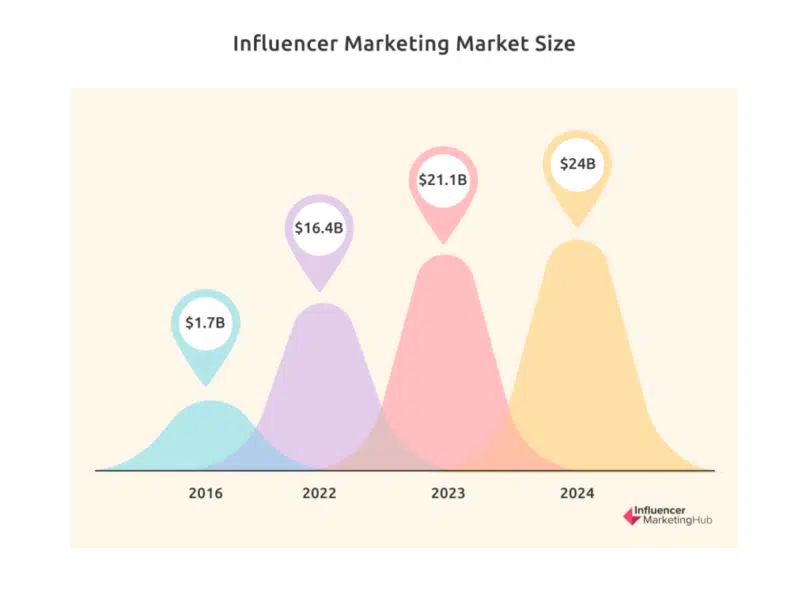
None of these should come as a surprise, says Jonathan Feniak, General Counsel at LLC Attorney.
“First, influencers have built a stronger rapport with their audience, sometimes far stronger than brand-customer relationships. Secondly, influencers often share content that resonates deeply, feels more personal, and is highly relatable to their followers. This authenticity fosters trust, making audiences more receptive to their recommendations.“
Sephora used the same approach, in collaboration with an influencer named “Millionaire Nanny,” to build product awareness in a post that has garnered 2100+ likes so far.
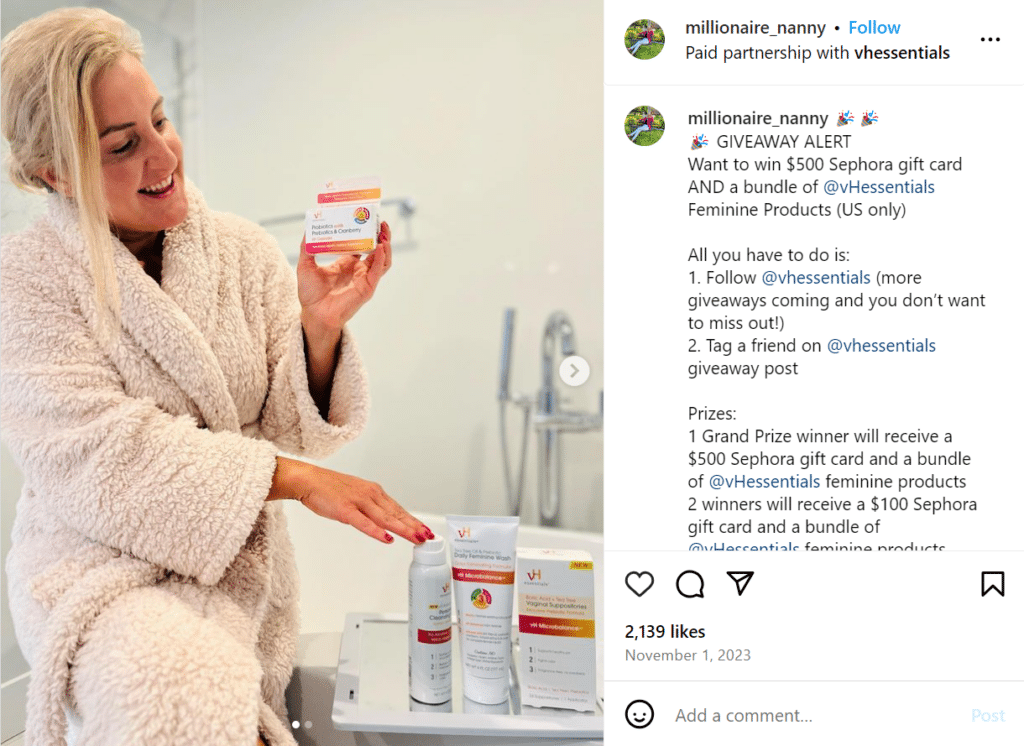
Here’s how to make that work for you too:
- Find an influencer that’s within your niche and budget – Your influencer’s audience must have needs and interests relevant to your product offerings in order to spur lead generation and sales. Also, consider just how much you’re willing to spend on influencer marketing and find a reputable influencer that falls within the mark.
- Give early access to products – If you’re a gadget fan, you’ve probably watched quite a number of unboxing videos on YouTube or Instagram. Giving an influencer early access to some of your hottest products and letting them unbox them in a pre-recorded or live video can generate a massive audience frenzy ahead of the main shopping day.
- Partner to host Giveaways – Giveaways are already lead magnets. Letting an influencer take charge helps reach a larger audience and facilitate brand awareness. Giveaway products should, of course, be from your brand, including one or two of your top products, to steer enough interest.
- Create flash sales – Collaborate with an influencer to announce blast deals and discount sales. For instance, your niche influencer could post, “I just got my anti-aging cream from RifiRaf, and I’m already loving the results! I heard stock empties in two hours. Up to you, early beds.”
You can also partner to create “A day in life” content. In this case, the influencer showcases a bouquet of products he or she uses for 24 hours, possibly a day or two before Black Friday. This showcases your product in the most practical way possible.
4. Give VIP Customers Early Access
“VIP early access pretty much works like giving an influencer early access. But this time, you’re rolling out the same opportunity to a bunch of your most loyal customers—either based on lifetime value, the amount spent on previous purchases, or other self-defined criteria”, Nora Sudduth, Founder & Owner at Nora Sudduth Consulting, says.
First, doing this helps to strengthen their loyalty even further. Loyal customers become brand advocates, and people trust word of mouth through loyal advocacy even more than a brand’s value proposition.
Second, when they gain access to your products or services early on, they can play the role of influencers, unbox, and share with their social audience. This stokes their audience’s interest, thus resulting in effective brand exposure and referrals during Black Friday.
To make this effective:
- The access should be limited as well—just enough to build loyalty but pique curiosity for more deals.
- Provide unique access codes that can only be used once and can’t be shared with others.
- Make the early access time-limited to create urgency.
Lastly, encourage them to share their experience online with friends and families using provided hashtags. User-generated content (UGC) generates 73% more positive response than brand-promotional content, and another 79% of consumers say UGC highly impacts their purchasing decisions.
5. Leverage Ethical FOMO
Have you ever come across your favorite deal, let’s say on Amazon or another retail store, and there’s a couple of hours just before the stock runs out? If it’s a product you need, your goal will be to gather as much as you can before the timer runs out.
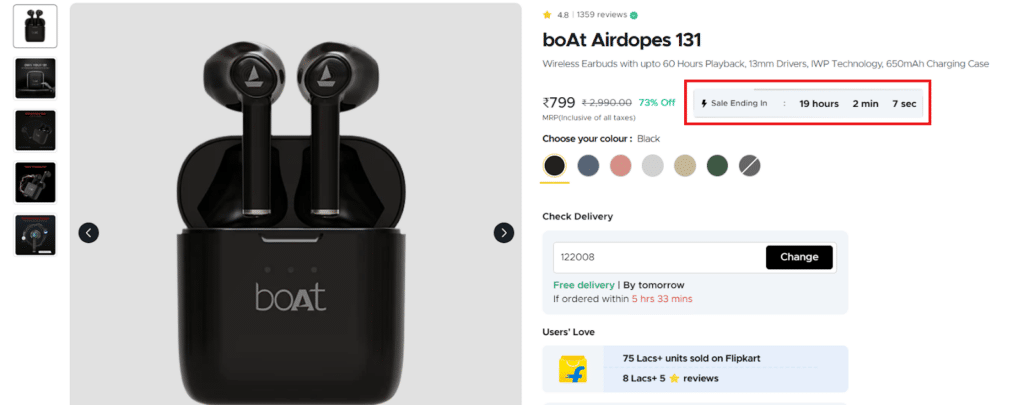
That’s FOMO—fear of missing out. You subconsciously assume there’s no better time to clinch such a deal at a cheaper price, and you do everything possible to take advantage of it. This psychological trigger can be incredibly powerful in marketing, especially during major sales events like Black Friday.
According to WiserNotify, 60% of consumers make a reactive purchase within just 24 hours of experiencing FOMO, and over 14% report a significant fear of missing out on the best prices. FOMO also spurs 60% of marketing sales.
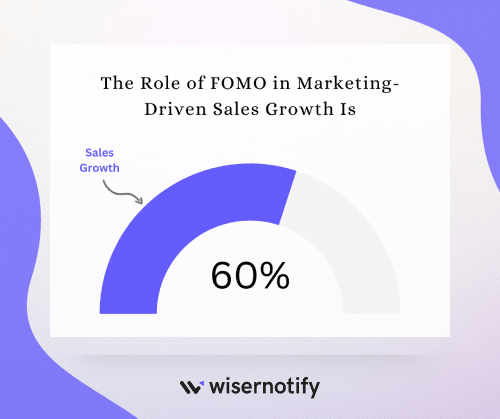
So, that’s something you should leverage, too. Here’s how:
- Limited-Time Offers – Highlight time-sensitive promotions to encourage quick decisions.
- Countdown Timers – Use countdown clocks on your website or emails to create urgency.
- Exclusive Deals – Emphasize that certain deals are only available to VIP customers or for a limited time, making them feel special.
- Show Social Proof – Share testimonials or posts from other customers who are excited about the deals to further entice potential buyers.
But be careful; you’re dealing with emotions here. Only about 29% of people experiencing FOMO are happy, likely because they secured the deal they wanted. The rest? Most feel jealous or disappointed, and some end up in debt in the process of chasing those deals.
“To avoid the same results, be as transparent as possible about your offers, in addition to encouraging responsible spending. While you can create urgency, also promote positive experiences and satisfaction like customer stories that come from thoughtful purchases rather than impulsive ones”, Grant Aldrich, Founder of Preppy, advises.
6. Offer Enticing Product Bundles
A skincare set containing one cleanser, toner, serum, and moisturizer or an outdoor camping package featuring lightweight tent, sleeping bag, and a camping stove. That’s called product bundling.
Product bundling means offering a group of related products together, like a shampoo and conditioner set, especially at a discounted price. This approach subtly enhances the perceived value and convenience of a deal, which, in turn, encourages customers to purchase more items than they might individually.
One of the brands that does this best is Beautybay. The beauty company’s product page also displays a countdown timer icon, with occasional flashes of price cuts from £189 to £50.
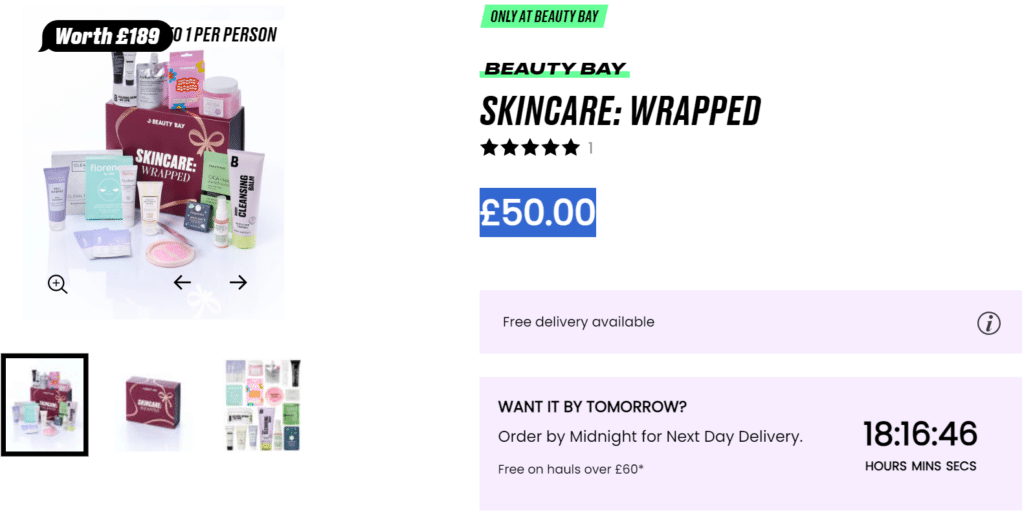
To do the same:
- First, dig out complementary products in stock – Use previous purchase data from your e-commerce or store registry to see which products customers love pairing. Let’s say you sell pre-owned Rolex watches. Everyday things customers would buy alongside would include high-quality watch winders, a leather watch case for storage, premium watch cleaning kits, and stylish watch straps.
- Take into account seasonal demand – For instance, combine items that are popular during specific times of the year, such as barbecue tools and outdoor games in the summer.
- Pretest bundles with early launches – Before Black Friday, you can roll out the bundle deal publicly and see how it performs without the frenzy. Collect data on each sale made and use it to appropriately tweak your bundles until they meet customers’ needs.
Rhami Aboud, CEO of Arch Web Design, asks you to keep your heads up.
“While product bundling coupled with a quick-steal discount can bring in rapid sales, it’s important to ensure you’re not running a loss. Limit bundle sales to one per person, assess the total costs to ensure prices cover expenses and maintain profit margins, and focus on bundles that sell well”, he says.
7. Enhance Experience with Giveaways and Contests
We all love freebies—maybe to a different extent, but we sure do. So, it’s unsurprising that giveaways yield 34% more conversions than other types of marketing content. Moreover, over 61% of consumers have once interacted with a brand or more for rewards.
See how Blendjet did that in collaboration with Kiehls.
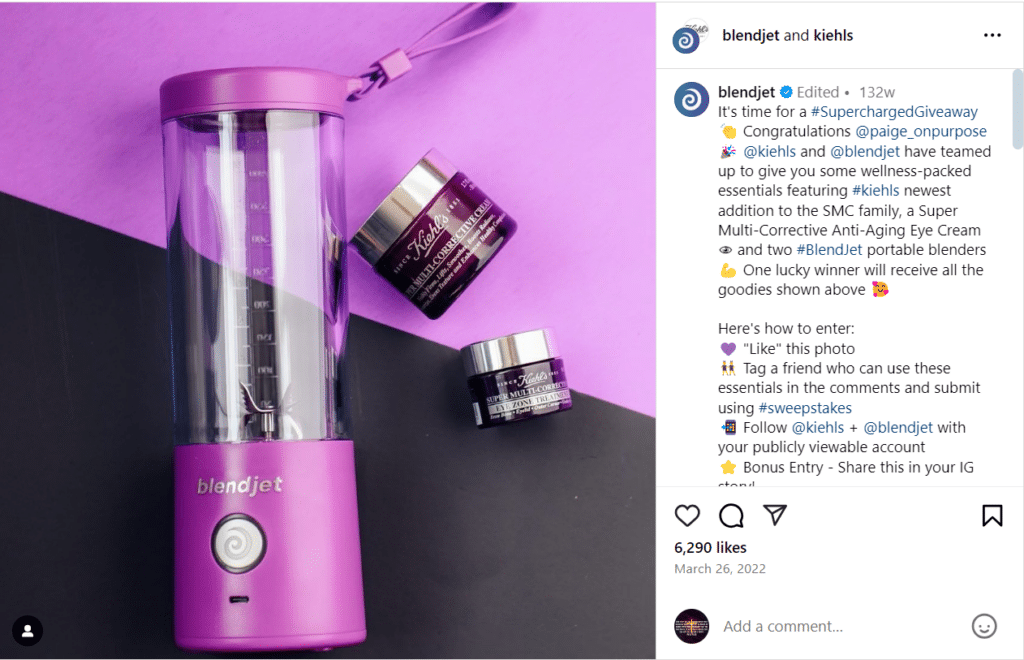
During Black Friday, most potential customers will look for giveaways and incentivized contests. You can target this audience to generate potential prospects for long-term conversion, brand awareness, and immediate sales.
To make it successful, do the following:
- Use enticing prize rewards – It could be a product bundle, cash gift, or special discounts during Black Friday or after. Just ensure it’s enough to pique your audiences’ interests and ensure maximum participation.
- Limit winners and add a timer – One or two winners are enough, regardless of your budget. This will help create scarcity and increase product value. Adding a short deadline also speeds up participation.
- Minimize requirements for participation – No need to ask your customers to snap their nails and toes before being qualified. Simply liking, commenting, tagging, and resharing to enter will do. However, you can also ask them to generate content (UGC) using a hashtag provided. See how Melvin did that below.
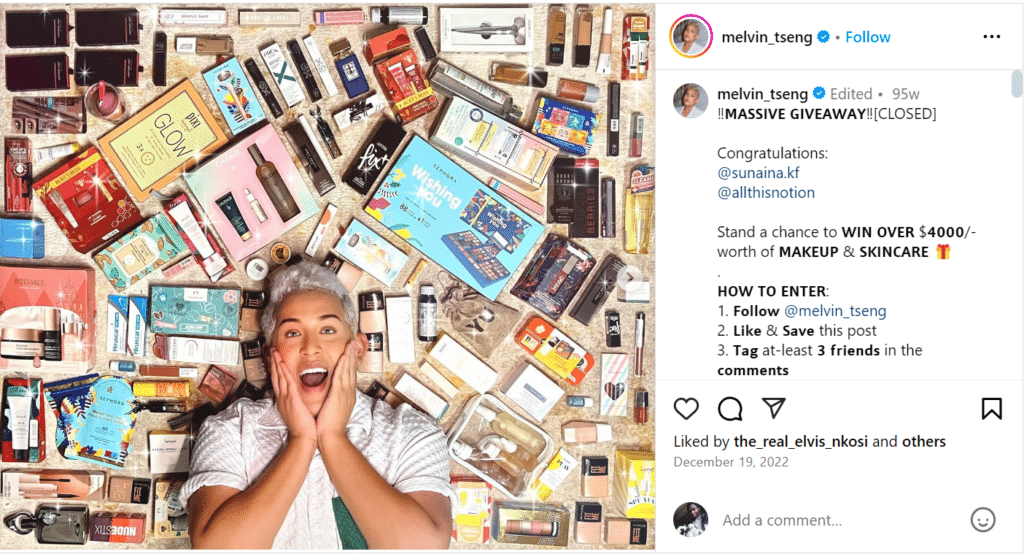
- Use social media to promote your giveaways – Social media channels garner more attention through loop engagement from followers and platform users. That makes them preferable to emails and websites. But you can still integrate them for a broader reach.
- Eliminate communication barriers – If you’re serving a global market, consider using a language common to your audience. You definitely don’t want your customers to start taking Attic Greek classes just to join a contest. Aha! You can also provide variations of the contest details in different languages or promote them based on location to encourage cross-border participation.
In addition, partner with influencers and other complementary brands to increase the scope of reach and attract wider coverage.
8. Incorporate Gamification
Highly engaged customers are 23% more profitable than those who are not. And one of the best ways to build such customers is through gamification. Games help to build bonds faster, which not only results in a healthier brand-customer relationship but also fosters community participation.
Here’s an example from JustShipIt. The brand encouraged customers to spin and win a prize at its physical store.
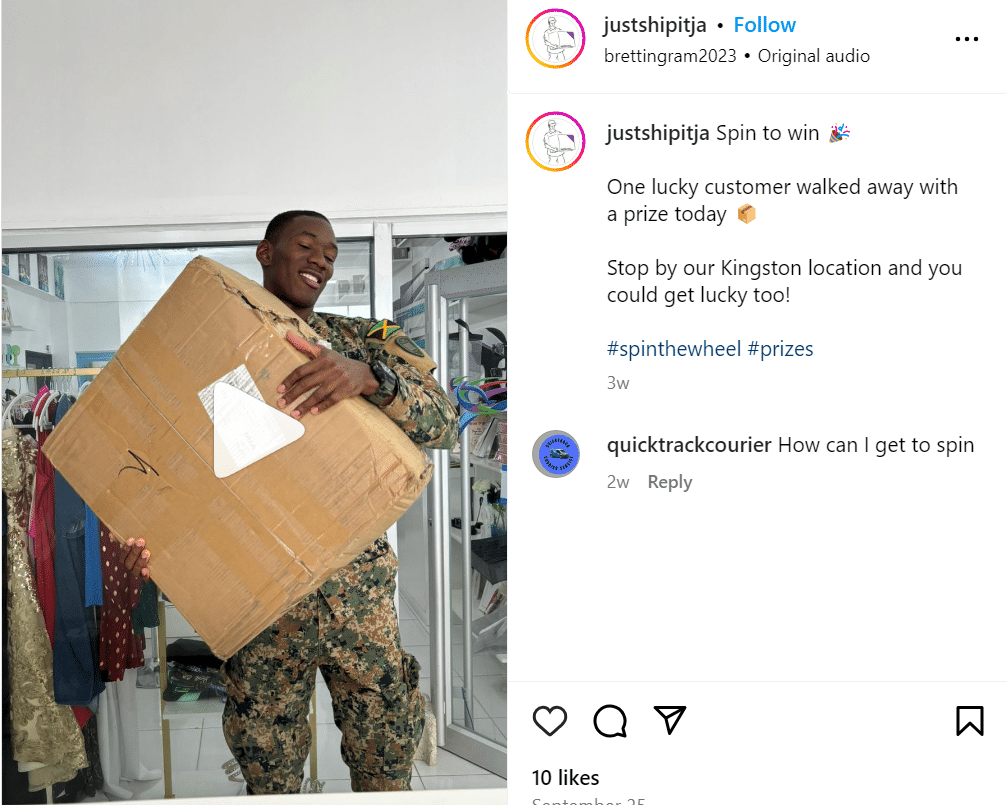
Some gamification ideas include:
- Treasure Hunt – Launch a scavenger hunt in which customers must find hidden items or clues in your store or website, and offer enticing discounts or prizes for those who complete the hunt.
- Spin-to-Win Wheel – Set up a digital or physical wheel that customers can spin for prizes, such as discounts, free shipping, or special gifts.
- Loyalty Points Challenge – Design challenges where consumers can earn bonus points for specific actions, like sharing on social media. They can use this point to redeem special discounts or products.
- Referral Programs – Gamify referrals by rewarding customers for bringing in friends. Your program should involve a tiered system where both the referrer and the new customer receive event-bound discounts.
- Mystery Boxes – Offer mystery boxes at a set price, where customers can win anything from a small item to a grand prize. This adds an element of surprise and excitement.
- Polls and Quizzes – Roll out interactive quizzes for your audience to choose the products they’d like you to offer at a discount on Black Friday. Best done a few days before the event.
There’s no hard-and-fast rule against the number of gamification ideas you implement. What matters is finding the one that works best for you.
9. Ensure Mobile Optimization for a Seamless Shopping Experience
Mobile commerce sales are expected to hit a whopping $3.44 trillion in 2027, up from the current value of $2.52 trillion in 2024. That’s because consumers are finding using their smart devices more convenient and efficient than ever before.
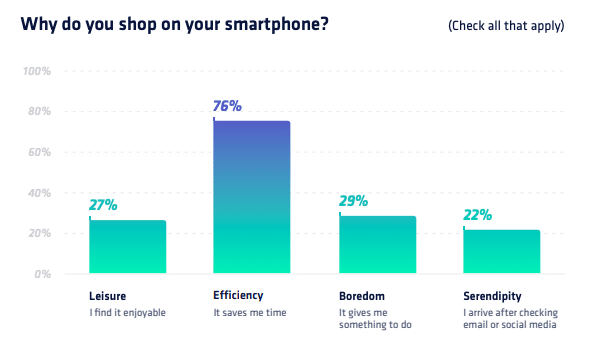
Further complementing this rise is the growing demand for mobile wallets, which is expected to account for over 54% of online payments in 2026. Moreover, mobile shopping currently boasts a conversion rate of 2%—behind the desktop rate of 3% but optimistic in the long run.
So, there’s so much earning potential from mobile shopping, and you have to optimize it. Here’s how:
- Ensure responsive design – Mobile devices come in different screen sizes, which can result in inconsistent presentation of your store designs. To avoid that, you should create a mobile store version for smartphone users and ensure the design adapts to all mobile screen sizes.
- Minimize intrusive elements – When we surf the internet, we all have one or two tales to tell about intrusively annoying ads or random pop-ups. Your customers do, too. Minimize ads, pop-ups, and other disruptive elements that can negatively impact your customers’ shopping experiences.
- Provide ample bandwidth for mobile servers – Anticipate a surge in traffic on Black Friday, which could lead to server overload and lag. You definitely don’t want your mobile app, a primary sales channel, to crash and become inaccessible throughout the big day.
- Search Functionality – Implement a powerful search feature that auto-suggests products and allows users to filter results easily. This is particularly useful on smaller device screens where customers have to scroll a mile before finding their best deal.
Most importantly, optimize the mobile version of your store, both on the web and app, for speed. 53% of users will leave a site that loads too long. Besides, conversion drops by 20% for every second delay in a mobile page load.
10. Collaborate with Other Brands
Brand collaboration provides an opportunity to promote your deals to a broader audience. Take Krave Beauty and ZitSticka as an example. The two collaborated to launch a giveaway targeting a shared beauty audience and garnered over 6000+ likes.
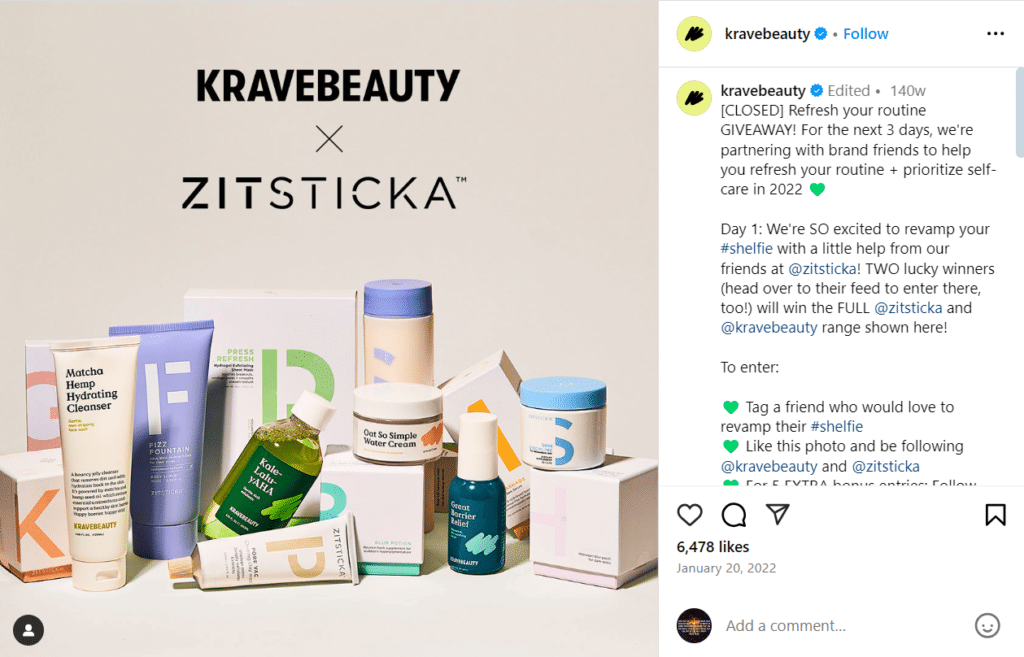
Another example of brand collaboration is from Starbucks and Häagen-Dazs. The pair bundled their products together to provide complementary deals for customers interested in dessert pairings.
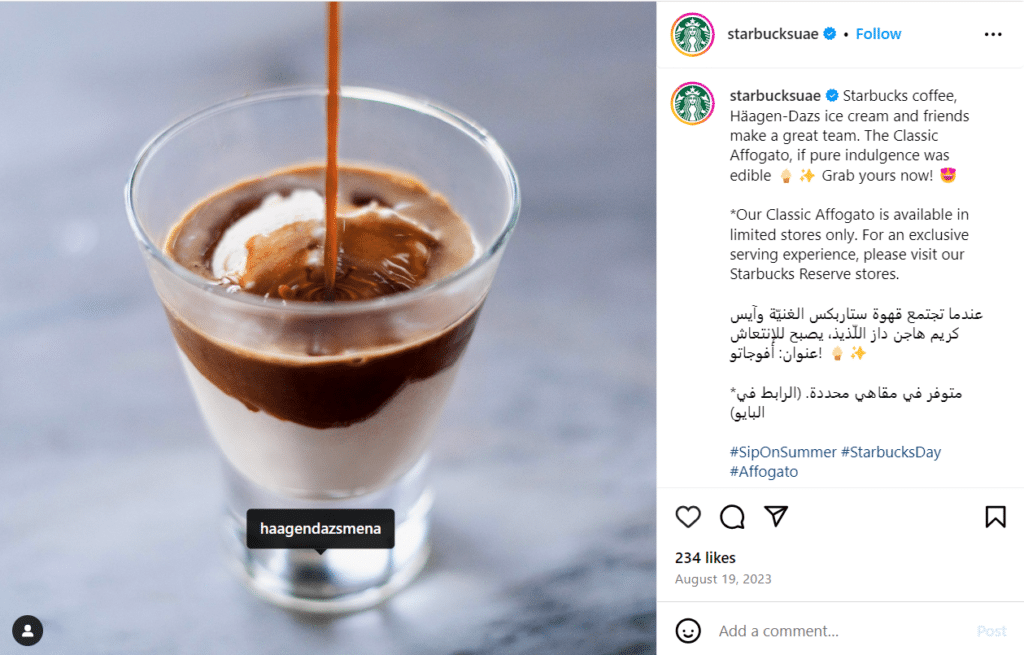
Besides joint giveaways and product bundling, you can collaborate with other brands through partnered promotions, like GoPro and Redbull do. You can also host a trade expo together while debuting both brands’ products to a combined audience.
To make joint collaboration work for Black Friday:
- Ensure the other brand is not a direct or indirect competitor. You only need someone whose products complement yours, not compete against them.
- Coordinate your marketing campaigns with multiple channels such as social media, email newsletters, and joint promotions to reach a wider audience.
- Create special product bundles that include items from both brands. This can attract customers looking for great deals while introducing them to both brands.
- Feature each other’s products in your marketing materials. This can include blog posts, social media shout-outs, or even collaborative videos.
Extra note: Brand collaborations should start weeks before Black Friday in order to build maximum momentum and make the best of your combined audience.
Launch Early Teasers as Part of Your Black Friday Marketing Strategy
Preparing for Black Friday is a lot of work, but it’s totally worth the revenue you generate, the leads you acquire, and the rapport you build if you do it well.
Here’s a quick recap of everything. First, launch early teasers to stoke interest and build curiosity. Follow-up with targeted and retargeted social media ads. Collaborate with influencers in your niche, give VIP customers early access, and leverage ethical FOMO.
Also, offer enticing product bundles, introduce giveaways and social contests, and gamify your customers’ experiences. Lastly, collaborate with other brands to reach more audiences and extend the buzz with post-Black Friday deals for Cyber Monday sales.



